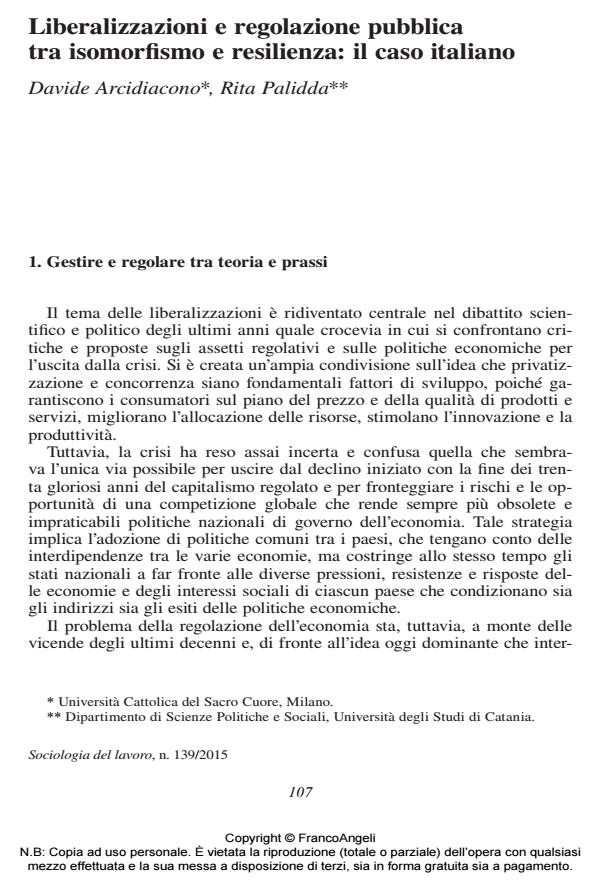Liberalization and public regulation between isomorphism and resilience: the Italian case
Journal title SOCIOLOGIA DEL LAVORO
Author/s Davide Arcidiacono, Rita Palidda
Publishing Year 2015 Issue 2015/139
Language Italian Pages 16 P. 107-122 File size 155 KB
DOI 10.3280/SL2015-139009
DOI is like a bar code for intellectual property: to have more infomation
click here
Below, you can see the article first page
If you want to buy this article in PDF format, you can do it, following the instructions to buy download credits

FrancoAngeli is member of Publishers International Linking Association, Inc (PILA), a not-for-profit association which run the CrossRef service enabling links to and from online scholarly content.
In the years of the recent economic crisis, liberalization policies has taken on a new prominence in the public debate, especially in Southern European countries as Italy. However, The liberalization policies are confronted with different institutional environments in which the action of convergence does not cause the same effects in all countries. This analysis helps to explain the slowness and limits of a top-down liberalization in Italy that is not coherent with country’s corporate and familist culture. Therefore, the social costs of liberalization policies are higher than the expected benefits, where the reform isn’t accompanied by a high level of coordination and legitimation among the actors involved.
Keywords: Market regulation, institutions, reform, privatization, capitalism
- I Costi Della Criminalitt Organizzata Nel Settore Agroalimentare Italiano (The Costs of Organized Crime in the Italian Agro-Food Sector) Gaetano Perone, in SSRN Electronic Journal /2018
DOI: 10.2139/ssrn.3175867 - Promises and Failures of the Cooperative Food Retail System in Italy Davide Arcidiacono, in Social Sciences /2018 pp.232
DOI: 10.3390/socsci7110232
Davide Arcidiacono, Rita Palidda, Liberalizzazioni e regolazione pubblica tra isomorfismo e resilienza: il caso italiano in "SOCIOLOGIA DEL LAVORO " 139/2015, pp 107-122, DOI: 10.3280/SL2015-139009